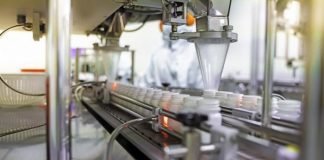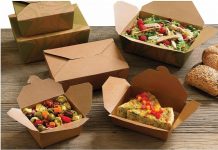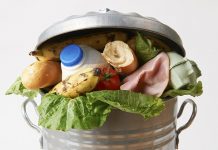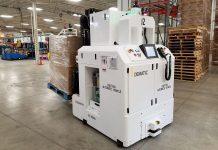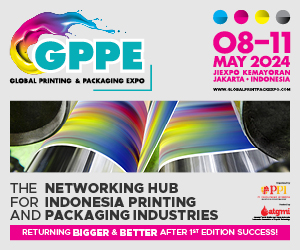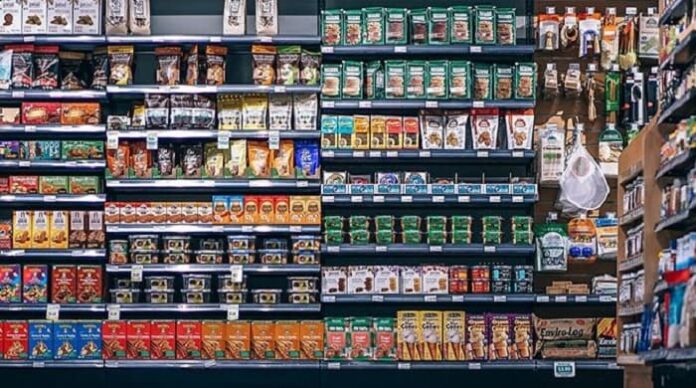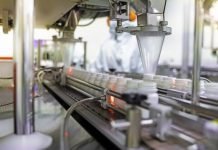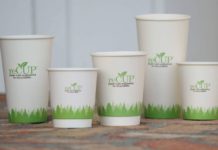Placing Sustainability First As We Go Into The Future
Not only do people currently live in challenging economic times, but also in challenging political ones. Energy-intensive production is not the only sector of the economy and society in Europe that is being negatively impacted by high energy prices. After Corona and supply shortages, those who thought they had emerged from the depths are being abruptly thrown back to reality by inflation and the energy problem. But let’s not lose sight of the fact that change can only happen when there is a need for it. Even and perhaps especially in times of crisis, there are chances to boost corporate flexibility, agility, and effectiveness through innovations, automation, and digitalization.
Ecological sustainability will continue to be the overarching topic in the food business when it comes to packaging trends for the upcoming year. It involves more than just the physical goods and may even involve logistics and packaging. There are very few supermarkets left that do not try to satisfy their patrons’ environmental concerns by using local suppliers and keeping trip times minimal. In order to attract and keep customers in the food business, it will continue to be important to be customer-centric. Branding and brand management are now increasingly accomplished through packaging and presentation at the point of sale (POS). Brands benefit from the appearance, feel, and content presented on packaging. Another crucial necessity is cleanliness and protection. No matter how strict the sustainability requirements are, customers’ expectations for quality and cleanliness will never be lowered. In other words, consumers are going to “eat with their eyes,” so it is essential to showcase products in an enticing, delectable manner while simultaneously considering how their actions will affect the environment and the climate.
Consumer behaviour is changing due to sustainability.
The food business must actively monitor shifting customer behaviour as it relates to packaging. A few years ago, health food stores were more likely to have organic goods, but today, most supermarkets carry them. In the food business, the subject of e-commerce or e-foods is likewise taking on a constantly expanding role. Urbanization, population shifts, and the pandemic, of course, favour this development. These considerations have significantly advanced not just the entire e-commerce industry but also the usage of packaging as POS virus defence. Here’s where things get interesting: In order to be transported properly, things must be packaged and secured, but packaging also needs to be visually appealing and environmentally friendly. When shopping, many customers are unclear about the option that will have the lowest environmental impact. They are not alone in this; the majority of packaging producers or consumers share their sentiments. Packaging that may have good intentions but is actually more detrimental to the environment than helpful keeps making its way onto the market. Waste management businesses are aware of this: Materials that are difficult to separate or make up a small portion of the collection of recyclables cannot be recycled. As a result, both the recycler and the cycle for recyclable materials lose out on material and profit. The sole alternative for non-recyclable materials is thermal recycling, which is another name for a trash incinerator facility.
Recycling as a key component of sustainable packaging design.
In addition to the social movement toward more sustainability, politics will also shape the future of the sector with tighter restrictions and recycling targets. The European Union’s Green
Deal, which includes a plan of action for a working circular economy, serves as the backdrop. This calls for the use of totally recyclable materials in the food and packaging industries, as well as the targeted collection, clean segregation, and thorough recycling of trash to produce a pure material that can be used once again for the same function without any limitations.
Multiple recyclers and dual systems have already created their own certificates that may be used to reassess the recyclability of a certain packaging option. Although the usage of mono-materials is seen favourably in terms of establishing plastic as a component of the circular economy, it becomes a challenge for material combinations that can’t be split or are challenging to separate, such as PE bottles with PVC sleeves. For instance, the food industry will need to rely increasingly on paper packaging and mono-packaging materials. As a result, plastic-free packaging will become more popular. In terms of sustainability, food that comes in a plastic-free packaging alternative will lead the way. Dispenser systems on store shelves will also be impacted by this. The tendency toward refills will grow stronger. Retailers including Alnatura, dm, Kaufland, and Aldi have already been testing unpacked units in some of their stores to see how customers react to the self-filling option, despite the fact that filling stations are still relatively uncommon. Although the initial emphasis was on refillable cosmetics, cleaning supplies, detergents, and dishwashing solutions, dry goods are now readily accessible unpacked; all you need to do is bring the appropriate containers or purchase them on the spot. Where can the industry omit plastic, is a crucial question. Where are alternatives to these products usable? But more importantly, how can one shield food from deterioration while it’s being transported?
The actions of consumers are not always fully reasonable. The food business uses more than half of the packaging made for consumers worldwide. However, compared to the packaging itself, the product that is wrapped produces ten to one hundred times more CO2 emissions. Although consumers frequently aren’t fully cognizant of it, the protection and shelf-life functions of packaging that is acceptable for the product are essential. The packaging industry needs to take this into account and use information and single-materials to positively affect consumer expectations.
Flexibility and efficiency are the determinants of production that are future-proof.
Maximum flexibility and effectiveness are important in food packaging. The future of food packaging depends on flexible, adaptable, and effective automation solutions, particularly in a market environment with intense competition pressures, constantly shifting consumer behaviour brought on by demographic shifts, digitalization, and limitations, as well as rising social expectations for greater sustainability.
Food manufacturers can rely on packaging machine manufacturer Schubert because it has a long history and offers highly automated flexible packaging processes for all food industry products, including fresh fruit and vegetables, dairy products, frozen foods, long-life foods, baked goods, and the increasingly popular ready meals. The most important issues affecting the food sector can be resolved with the help of a knowledgeable team of specialists. From the feeding of the items through the dispatch of the finished product, completely automated, robot-supported comprehensive solutions boost the productivity, long-term security, and profitability of food producers. The value chains in all production processes are evolving as a result of robotics and digitization, not just in the packaging sector.
Supporting technologies include AI, robots, and 3D printing.
Machines must be modified with appropriate format parts due to the tendency toward ever-faster product changes and adjustments. This can be a time-consuming and expensive endeavour in situations of supply constraints and limited raw supplies. And this is where using 3D printing in tool creation gives a complete and sustainable solution. Customers of Schubert, for instance, can utilise PARTBOX, a full package made up of a virtual streaming platform, an in-house created 3D printer, and the appropriate plastic material, to 3D print the necessary plastic components for their own manufacturing. The format part is simply designed by the tooling specialists at Schubert Additive Solutions and made accessible for download on the site.
The use of systems for image processing as quality control in continuous packaging processes is an addition to efficient manufacturing workflows. The next step in this line of thinking brings us to artificial intelligence (AI) and neural networks, which, as self-learning processes, can recognise pertinent product features and automatically determine user parameters—an application for which Schubert has already made significant progress with the creation of its Cobot. The Cobot independently learns new items and enhances the automated procedure to assist in the feeding process. Food producers can react to shifts in their output more rapidly, flexibly, and effectively thanks to digitalization. Due to the modular design of its packaging machines, the quickest format changes, and the best-coordinated processes, Schubert, as an innovation driver, provides precisely the type of reaction the packaging industry will need in the future.
Thinking holistically about processes to increase sustainability.
With consumer behaviour changing quickly and society becoming increasingly digitalized, it is reasonable to predict that the sustainability wave will continue to have a significant impact on the food business. However, the finished products are only a small portion of the entire process. A value-creating process that includes distribution, logistics, and eventually production will be changed by automation and digitalization in the upcoming years. This megatrend can only be successfully resisted in all of its components by increasing productivity, adaptability, and mobility. The selection of the packaging material, feeding, the numerous packaging phases and transport, as well as the post-consumption packaging recycling process, must all be taken into account holistically and more comprehensively in order to accomplish this.
In theory, moving forward, the emphasis will be on eliminating plastic and replacing it with paper. Where plastic cannot be eliminated, mixed packaging will be swapped out for recyclable mono-material packaging in order to make it more appealing to the recycling sector. Working with a production partner who is an expert in the material mix will provide a clear competitive edge. With the assistance of its industrial partners, Schubert is now developing broad expertise in the area of packaging materials. This includes comprehensive information on the materials’ machinability and recyclable potential as well as package design and optimization along the whole supply chain.
The future lies not in cutting-edge technical silo solutions, but rather in a comprehensive strategy that takes into account all the factors that contribute to a seamless integrated packaging process in the food business. With Schubert, the sector now has a centralised solution provider that can map the complete packaging process’ value chain in a single step. However, there is one thing that will not alter in the upcoming years: success will always revolve around looking to the future with fresh perspectives, audacity, and interest.



